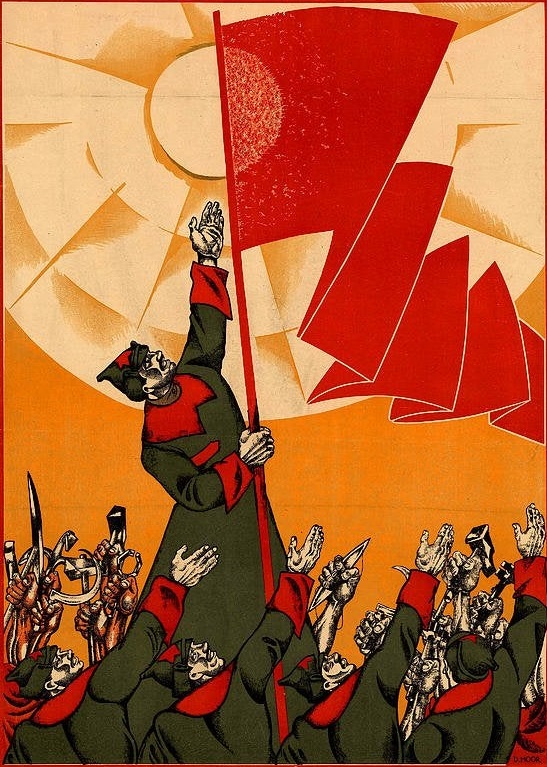For example,
60 seconds = 1 minute
60 minutes = 1 hour
24 hours = 1 day
7 day = 1 week
29-31 days = Month (approx.)
365/366 days = year
It’s like for the imperial measurement of distance, where 1 mile = 5280 feet…
Edit: just to clarify, I’m more or less keen towards any consistent, decimal-based measurement systems like base-10 or base-12.
TL;DR: mostly ancient math and moon stuff.
This article suggests 60/60 came from the Sumerians who used a base-12 counting system. This and other articles note that 60 is more flexible than 100 in many ways as it’s divisible by 2, 3, 4, 5, and 6.
The Babylonians invented the 360 degree circle, and so understood the sun to move about 1 degree per day.
The number of days in a week and weeks in a month is based on lunar phases (month=moon, and in Chinese the word for month is the same as moon, 月). This article says the approximately 28 day month is traced to ancient Mesopotamia with leap days used to stay consistent in the long run. As for days of the week that article also says they were based on the 7 non-fixed heavenly bodies visible to the naked eye.
Tl;dr: The Middle East made it?
TLDR: we want easy divisions for time, and nature isnt decimal.
Well, the time for eath rotation isnt a constant, it will slowly decelerate and days will be longer.
Using multiples of 10 for time was considered, but was a shitty option compared to the current deal. Months should all be 30 days and then have a free week at the end of the year tho, egyptian style.
Parties during that week would be unreal
deleted by creator
Aren’t Juche years basically the standard measurement of years in the Gregorian Calendar, except it is equal to current year - 1948 (Creation of DPRK)?
Writing this in 634.023.M3 Imperial Calendar i agree we should change it to juche
What is juche time though?
Calendar used in DPRK, basically normal gregorian but the dates are counted from 1912 as Juche era, in a combination of european system and partially Korean system.
Today date is: 19.08 Juche 112
Hmm, that’s interesting…
Time measurements like heat, mass, length etc are arbitrary units. It is just that they are the oldest.
The Sumerians gave us our time standards and they loved base 12. So twelve hours in the day and 60 (5x12) minutes in the hour. Also 12 months in a year and 360 degrees in a circle.
The French actually tried to implement decimal time after the revolution but reverted back after 6 years or so.
Americans use the imperial system, yet claim not to be imperialist. Curious 🤔
Here is my insane take:
We should use some large multiple of ten of plank units for distance measurements,
Then we can use a noticable on our scale time period in plank time units to measure time.
That way when we can set easier standards for when we meet our extra terrestrial comrades.
Unfortunately, seasons, years, when it’s light out compared to the length of a day… These are not conveniently metricised.
Let alone standardized?
Because there’s 365 days in a year (duh). I mean, if it were, like, 200, then a year would be 0.7 season cycles?
Same for a day. If we set it to, say, 10000 minutes or whatever, noon could very well end up as the middle of the night eventually.
As for the minute and hour, how else would you fit seconds into a day? 24*60 square rooted for equal units? So we have 120 new minutes each 120 seconds long? I mean, I could see that sort of working? But it’s still pretty weird, and not a true decimal. So I guess you’d have to rework seconds also.
Edit: months are based off the moon, and there would be no way to somehow make units of 10 months fit into a year, which literally cannot be anything other than 365 days, unless you want your afternoon tea parties 0.12 daylengths past midnight.
Since we are on the topic of time measurements, take Caesar and Augustus’s names off of my calendar please and thank you.
Also, if you can fill in February to be full 30 days, that’d be great as well. Take a day off from each of the emperors.Wait, where does Caesar fit into the naming of calendar months?
Edit: I see, Julius Caesar for July. Now, I see fully your point
July and August.
And beyond that September, October, November and December are just, essentially, Latin words for 7, 8, 9, 10. Which of course raises the obvious question/observation of “why the fuck are months 9-12 given names correlating to 7-10?” And the answer is… the above two months were shoved in. For reasons. Why not put them at the end? “Because fuck you, that’s why!” (There’s probably some reason and I don’t actually care. I’ve officially thought too much about Rome and Latin for the day)
https://www.almanac.com/how-did-months-get-their-names
March (Martius) was named for Mars, the god of war, because this was the month when active military campaigns resumed. May (Maius) and June (Junius) were also named for goddesses: Maia and Juno. April (Aprilis) is thought to stem from the Latin aperio, meaning “to open”—a reference to the opening buds of springtime. The rest of the months were numbered; their original names in Latin meant the fifth (Quintilis), sixth (Sextilis), seventh (September), eighth (October), ninth (November), and tenth (December) month.
Eventually, January (Januarius) and February (Februarius) were added to the end of the year, giving all 12 months proper names. January was named after Janus, the Roman god of beginnings and transitions. February’s name is believed to stem from Februa, an ancient festival dedicated to ritual springtime cleaning and washing.
Julian Calendar Updates When Julius Caesar became Pontifex Maximus, he reformed the Roman calendar so that the 12 months were based on Earth’s revolutions around the Sun. It was a solar calendar, as we have today. January and February were moved to the front of the year, and leap years were introduced to keep the calendar year lined up with the solar year.
The winter months (January and February) remained a time of reflection, peace, new beginnings, and purification. After Caesar’s death, the month Quintilis was renamed July in honor of Julius Caesar in 44 BC, and later, Sextilis was renamed August in honor of Roman Emperor Augustus in 8 BC.
Of course, all the renaming and reorganizing meant that some of the months’ names no longer agreed with their position in the calendar (September to December, for example). Later emperors tried to name various months after themselves, but those changes did not outlive them!
The only metric unit of time is the second. all the other ones are customary units that are geared towards living on Planet Earth. There was a movement for decimal time at one point, but it never really took off. Given that the length of a day changes, I don’t see how it would remain stable either. Which is something that SI units try very hard to make sure doesn’t happen.
The main reason is because we use natural cycles that are important for civic and agricultural reasons as the basis of our measurements. And those cycles are unrelated phenomena that don’t match with each other well.
Day and year are based (duh) on two solar cycles (Earth’s rotation and translation), while the month and week are based on the lunar cycle of translation around the earth in roughly 28 days. When people tried to force lunar and solar calendars to fit, we ended up with the inconsistent months we have.
The 12/60 base divisions of the day were chosen before we had good calculators. Numbers with many divisors like 12 and 60 help a lot with mental math when you don’t have calculators.
There have been proposals of better calendars. The French tried something during the revolution and other people as well. The French republican calendar was:
- 1 hour = 100 minutes
- 1 day = 10 hours
- 1 week = 10 days
- 1 month = 3 weeks
- 1 year = 12 months + 5 monthless holiday
Another idea is the Cotsworth Plan:
- 1 minute = 100 seconds
- 1 hour = 100 minutes
- 1 day = 10 hours
- 1 week = 7 days
- 1 month = 4 weeks
- 1 year = 13 months + 1 special monthless holiday
I like the French Republican Calendar, but I would change it to months with 6 weeks of 5 days instead. And divide the week into 3 work days, 2 weekends.
12 hours in half a day is fine for me. 12 can be divided into halves, thirds, quarters and sixths. That’s useful for planning out a day. Time is one of the applications where I don’t have a complaint about using base 12.
Exactly why there are 12 months and 24h a day, for easy divisions.
The real confusion is when you count the days in a month, or year…
Hot take: imperial units are fine for normie stuff (as in, not engineering or math or whatever)
They come in useful sizes! Feet are handier than meters and gallons are better than liters. And unit conversion between feet and miles, pounds and tons, etc. isn’t something that ever happens in day-to-day life. It sounds silly to say that a mile is 5280 feet but I’m pretty sure that ratio was decided retroactively for the sake of making the system consistent. As in, no one knows or cares about converting between the two because we already know how long a foot is and how long a mile is. Also no one uses the obscure units like gills and barleycorns.
Feet are handier than meters and gallons are better than liters.
Wrong, youre just used to them. I roughly know what a liter of something weights, usually around a kg. A gallon tho? wtf i would know? I can easily compare meters of length to my arms or height, but i need more complex divisions for feet
A foot is as long as my forearm and a little longer than a literal foot, unless you’ve got big feet. An inch is as wide as my thumb which I have used to measure things cuz it’s pretty exact. You’re right that I don’t know how much a gallon is in pounds though. It’s like… more than a bag of apples but less than a box of soda
If you keep this nonsense up I will convert litres to kilograms and back into milligrams, I will. Right in front of you
Do it chump! I’ll proceed to not read it because I don’t know how much any of those units are 😤😤😤
1 litre of water weighs 1 kilogram. It also takes up a space of 1dm^3, or a cube that’s 1x1x1dm. How is this possible? Because 1 times 1 times 1 always equals 1, so your cube is always 1 cubic decimetre. Or 0.01 decametre. Or 0.001 metre. Of course we can change some sides of this cube and still get 1dm^3.
I can do it the other way around too, 1 kilogram of water weighs 1 litre! And I can do it as many times as I want to!
1 gallon fills around 20 glasses which is about 10 tummies worth of fluid which if drunken all at once will make you weigh 1 baby heavier and produce 1 toilet worth of vomit.
I don’t want to do it the other way around
I can do it with other units too. 1l of water at 20C heated by 1C converts to 1 calorie. The average glass holds 330ml of fluid, so I need to expand 0.33 calories to heat that glass up by 1C.
I actually kinda like the idea of the gallon due to how much beer that represents in a small unit, 1l is tiny.
Base ten is trash and a glorious socialist utopia wouldn’t use ivory tower measurements that aren’t actually useful for performing labor.
A base 12 or 60 system is much more flexible for “small” human scale measurements, with base 10 being a bit more useful for “far distances,” for orders of magnitude estimation because of our base10 numbering system, but then going back to a large divisor system for galactic distances. For example a parsec is 648000/pi astronomical units, which isn’t metric in anyway shape or form, but is extremely useful for astronomical calculations.
We have a similar system to that today in America. Skilled Tradesmen will use imperial/base 12 systems for manual work. i.e. Construction, carpentry, etc. as the ability to use thirds and quarters of a unit without relying on fractions and having clearly defined lines on a measuring stick that have those thirds/quarters, is more useful then an arbitrary base 10 measurement that only has 2 divisors. The reason america still uses the “standard” system is that it is useful, not because of “boomers” or whatever.
It’s a discussion I have with a friend sometime… in actuality in the metric system scale of 10 works fine. 12 scale is only necessary for imperial measurements because there’s nothing smaller than an inch, having 3.2 inches literally cannot be represented on a ruler. So you start working with like half inches, quarter inches, even 1/8th of an inch which sounds like a headache. Note that inches are on a scale of 12 but not base 12.
Since in metric you can “create” units as needed (they already exist we just don’t use them most of the time), you can quickly and safely measure 3.2cm. You can also still do division, it just won’t need to be represented by fractions. If you have a 10cm long board and want to cut it in four, each cut will be 2.5cm long, not a quarter of a unit long.
With that level of detail you can get to very minute decimals like 4.52cm, although for most daily uses you don’t need to count anything smaller than mm. The amount of times I’ve had to use um (micrometers) in my life was… 2?
So with this for example
Skilled Tradesmen will use imperial/base 12 systems for manual work. i.e. Construction, carpentry, etc. as the ability to use thirds and quarters of a unit without relying on fractions
With simple divisions and multiplications I have the ability to achieve any measure I need. I assure you our tradesmen are not any slower or worse than those in the US haha
It also allows a pretty cool conversion since by standard 1l of water weighs 1kg.
Base ten is trash and a glorious socialist utopia wouldn’t use ivory tower measurements that aren’t actually useful for performing labor
I figure you’re probably joking but I don’t think any lab worker does their measurements in fluid ounces and cups 😬
I am joking, but beer is drunk by the pint and brewed by the barrel as Marx intended, though Germany had lost it’s way and started using centiliters, bleh.
That said I am absolutely perfectly adept at the metric system and used it exclusive when I studied chemistry, however for home improvement’s and craftswork, I still use inches/feet.














